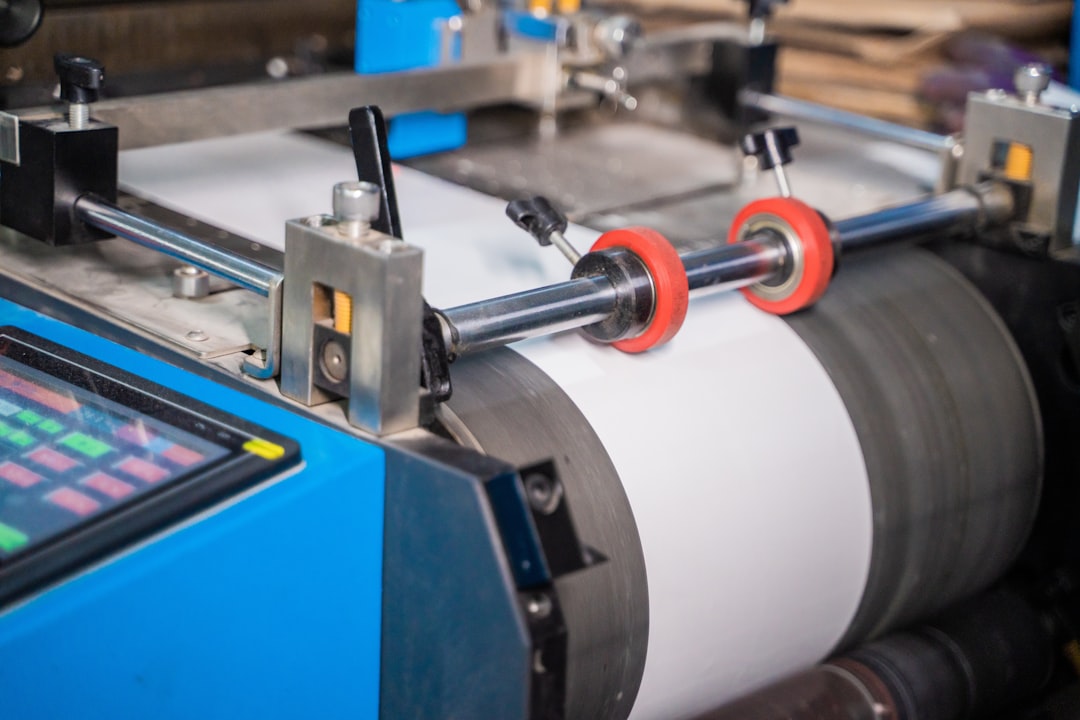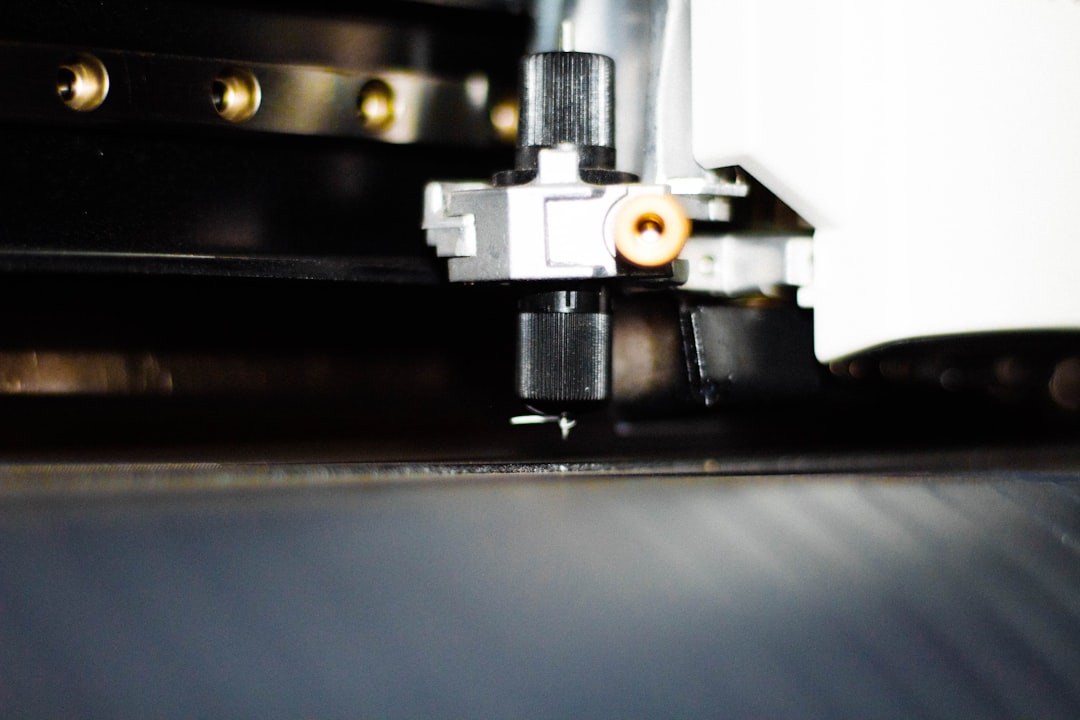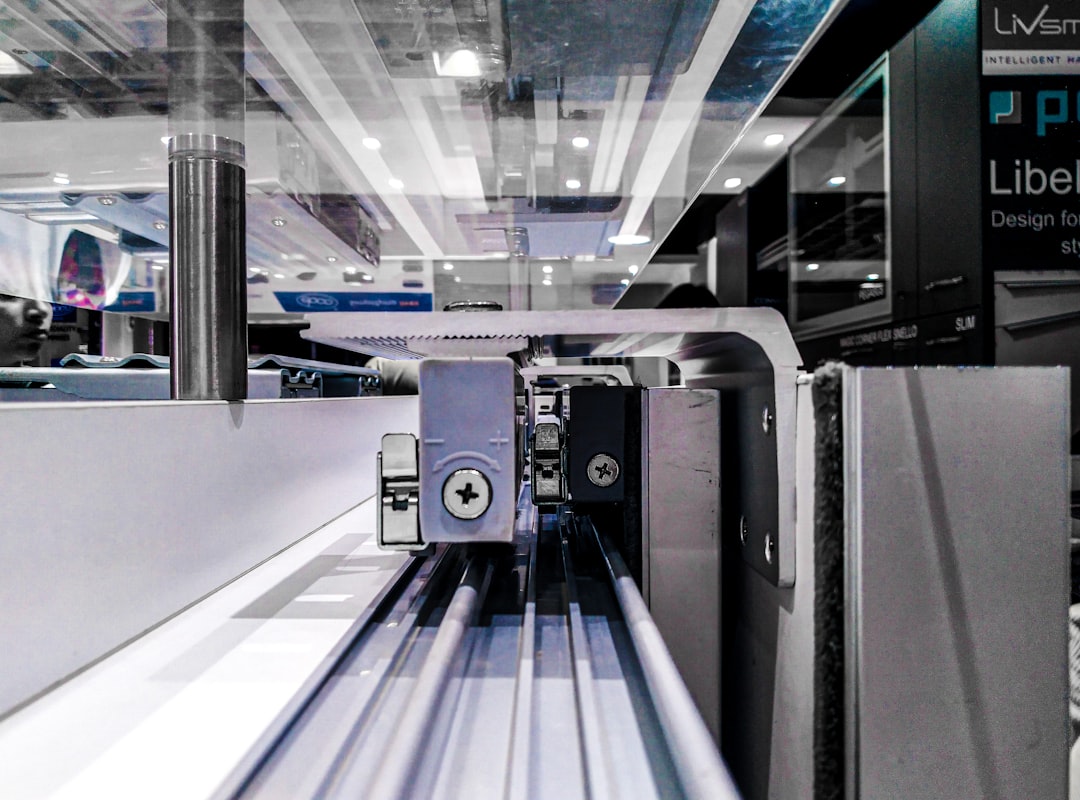

Engage prospects with a scan and streamline customer engagement with FREE QR code marketing tools by Sona – no strings attached!
Create a Free QR CodeFree consultation

No commitment

Engage prospects with a scan and streamline customer engagement with FREE QR code marketing tools by Sona – no strings attached!
Create a Free QR CodeFree consultation

No commitment
Printing roller suppliers operate in a landscape where rising buyer expectations, rapid technology changes, and the demand for operational transparency add pressure at every stage of the sales cycle. Missed high-value prospects are a persistent frustration, especially when critical decision-makers engage with a supplier’s content or collateral without leaving a trace in the CRM. This lack of visibility not only leads to lost opportunities but also drives up acquisition costs by wasting resources chasing less-qualified leads.
Today, QR codes offer a direct, measurable bridge between physical assets and digital buyer journeys for both printing roller suppliers and manufacturers. Rather than relying on buyers to manually enter URLs or complete paper-based request forms, QR codes enable instant access to information, documentation, and tailored digital experiences. As expectations grow for fast, relevant engagement, not capturing prospects in real time risks letting competitors engage first or missing upsell opportunities.
Embedding QR codes in print collateral like brochures and product packaging, as well as in showrooms or on event signage, invites passive prospects to take action, while unlocking valuable intent signals that feed into modern CRM and marketing platforms. This guide shows how QR codes in marketing capture data that would otherwise go untracked, prioritize the most promising leads, and refine every aspect of lead management and go-to-market execution for printing roller suppliers.

Printing roller suppliers often struggle with incomplete prospect data because many high-fit buyers interact with catalogs, event displays, or sample products without submitting a form. Even when those buyers are actively researching roller materials, tolerances, or maintenance requirements, they remain anonymous. The result is a pipeline that misses genuine purchasing signals and a sales team that chases lower-value leads while strategic opportunities slip away.
QR codes reverse that dynamic by making every asset scannable, measurable, and connected to a next step. Instead of relying on printed inquiry forms, email addresses typed from memory, or business cards that never get logged, buyers can scan a code, reach the exact resource they need, and trigger an automated capture of key details. You get intent data in real time, while buyers enjoy a streamlined experience that matches modern expectations.
By weaving QR codes into catalogs, displays, invoices, crates, and operator manuals, printing roller suppliers can finally see what happens between first touch and form fill. That visibility enables faster response times, higher lead quality, and a more accurate forecast of demand across product lines.

The buyer journey for rollers is complex, technical, and often collaborative. Operations managers, print supervisors, engineers, and procurement teams all influence specifications for durometer, surface finish, TIR, and chemical compatibility. Much of this research begins offline as buyers flip through catalogs, compare samples, and scan packaging in a showroom or on a plant floor. Without a seamless way to jump from paper to digital, suppliers are left guessing who is interested in what, which leaves sales blind to intent.
QR codes remove that friction. A single scan can direct a prospect to the exact resource they need: an anilox comparison chart, a nitrile versus EPDM guide, or a maintenance checklist tuned to their press. Dynamic QR codes make updates simple, so you can keep technical content current without reprinting collateral. Every scan becomes a measurable event tied to a channel, a location, and a topic, enabling true attribution and smarter follow-up.
These advantages matter in a category where buying cycles are lengthy, product differentiation is technical, and margins depend on precision. The faster you connect physical touchpoints to a guided digital experience, the more predictable your pipeline becomes.
Choosing the right QR format ensures each scan unlocks the most relevant action. For printing roller suppliers, the most effective formats align with technical research, service, and sales enablement. They also support continuous updates and measurement so marketing and sales teams can test and refine over time.
Consider which team will own the destination and what you want the scanner to do. Engineers may favor spec sheets and CAD files, while procurement prioritizes quote forms and compliance documents. After you map outcomes to audiences, select formats that eliminate steps for the user and gather the context you need for follow-up.
Dynamic QR codes are best for most commercial scenarios because they provide tracking, editable destinations, and campaign-level insights. Static codes work for unchanging resources like a permanent compliance statement or a universal safety video, but they limit your ability to optimize.

Growth often hides in plain sight. Walk through your own showroom, booth, or packaging line and count how many places an interested buyer could scan for more information. Anywhere you currently hand out a brochure, send a PDF by email, or rely on a receptionist to pass along messages can become a conversion moment with a QR code.
When you place QR codes in high-intent environments, you collect signals from accounts that rarely fill out forms. You also make it easier for teams on the shop floor to access documentation and request support, which improves satisfaction and retention.
Each placement plays a distinct role in the buyer journey. Early touches invite exploration and build retargeting audiences. Mid-funnel interactions reveal requirements and timeline. Late-stage scans from packaging or service labels sustain the relationship and highlight expansion opportunities.

Your best use cases will mirror the exact questions customers ask during research, evaluation, and ownership. QR codes make those answers immediate, trackable, and connected to the right next step. The following examples align with common buyer interactions across catalogs, events, and installed products.
The value is twofold. First, you reduce friction for the buyer, which increases engagement and satisfaction. Second, you capture behavioral data that points to product fit, urgency, and decision-makers, which gives sales a head start.
Each scan is a data point that broadcasts a buyer’s stage and interest. When you deploy multiple QR codes across your materials, you turn scattered interactions into structured audiences. That segmentation powers Intent-Driven Retargeting: Driving High-Impact Campaigns with First-Party Intent Signals and helps your team personalize communication from the first automated email to the final quote.
Think about your funnel in terms of materials and moments. Early-stage prospects scan educational content. Mid-funnel evaluators scan comparison tools or spec sheets. Late-stage accounts scan pricing pages, quote forms, or warranty registrations. Tagging these actions gives your CRM the fuel it needs for effective scoring and outreach.
With Sona QR, you can build this segmentation without heavy development work. Each code carries metadata, which lets you create audiences for OEMs versus converters, engineering leads versus procurement managers, and post-purchase users versus new evaluators.
QR codes are connective tissue for your entire go-to-market plan. They let you measure print, simplify events, and turn packaging into a service channel, while feeding your digital stack with clean, structured signals. When every channel is instrumented, your campaigns become smarter, and your handoffs between marketing and sales become smoother.
Think about QR codes as a low-lift way to unify your full-funnel programs. They help marketing learn which narratives convert and help sales understand what each account cares about before the first call. Over time, the data reveals which channels deserve additional budget and which assets need refinement.
Centralized analytics, such as those in Sona QR, let you manage all codes in one dashboard, monitor performance, and sync data to your CRM and ad platforms. That closes the loop between offline interactions and measurable digital outcomes.
A structured process ensures your first QR initiatives drive real outcomes rather than random scans. Treat QR programs like any performance campaign: define the goal, design the experience, test thoroughly, and measure relentlessly. The payoff is a predictable flow of high-quality signals and leads.
Start small with one or two high-impact placements, such as a flagship catalog or a trade show booth, then scale what works. Use dynamic codes wherever possible so you can adjust destinations, copy, and targeting as you gather insights.
Begin by clarifying the objective. For example, you might want to identify decision-makers at a flexo conference, speed up custom quote requests for heat-resistant coverings, or reduce support tickets by providing maintenance videos on packaging. Align each use case with a tangible business outcome such as booked demos, qualified specs received, or reduced time to first response.
Map the user journey from scan to action. Decide what the user should see first, what data you need to collect, and what happens after submission. A focused use case with a clear next step will outperform a generic link to your homepage.
Choose static codes for destinations that will not change, such as a permanent safety video, and dynamic codes for anything that requires tracking, optimization, or content updates. Dynamic codes are ideal for campaigns that span multiple events, catalogs, or regions because you can evolve the destination without reprinting.
Decide on the data model early. Determine how UTM parameters, campaign names, and asset tags will appear in your analytics and CRM. Consistency makes reporting simpler and ensures that sales reps can see context at a glance.
Incorporate branding, a clear call to action, and ample white space around the code. Add a short benefit statement, such as Scan for spec calculator or Scan for maintenance video, so users know exactly what they will get. Make the destination mobile-friendly with fast load times and intuitive forms.
Test scanning in real-world conditions. Check multiple devices, distances, and lighting environments. Verify that codes printed on porous materials remain scannable and that glossy finishes do not create glare. If your audience wears gloves on the plant floor, test with those conditions in mind.
Place codes on assets that already get attention: catalogs, trade show displays, shipping crates, labels, and invoices. Match each placement to the likely user intent. A booth banner should push to demos, a packaging label should push to service content, and a catalog should push to fitment tools and quote requests. For in-house printing, a dedicated QR code label printer can streamline production.
Train your staff to point out the codes and to describe the value quickly. A short prompt from a rep during a booth conversation or a showroom tour can increase scan rates dramatically. If possible, add a small incentive, such as an extended warranty for scanning and registering on site.
Monitor scan volume, completion rates, and downstream impact on meetings and revenue. Use A/B tests on calls to action, landing page layouts, and incentives. Retire underperforming assets and double down on the placements that move the needle.
Feed insights back to creative and operations teams. If a particular roller series gets more scans but fewer form submissions, your content may need more clarity. If event scans spike on day two in the afternoon, staff accordingly. With a platform like Sona QR, you can track scans by time, location, and device, and push those events into Salesforce or HubSpot for real-time action.
For many suppliers, offline interactions remain a black box. You may know how many catalogs you printed or visitors you greeted, but not which touchpoints turned into pipeline. Modern QR tracking changes that by surfacing granular data at every step, from the first scan to the signed PO. For deeper measurement tactics, read Sona’s blog post The Essential Guide to Offline Attribution: Maximizing ROI through Offline Channels.
Analytics matter because they inform both strategy and execution. When you can tie scans to channels, content types, and account profiles, you can allocate budget with confidence, qualify leads more accurately, and identify upsell windows across the installed base.
With Sona QR, you can track every scan, unify fragmented touchpoints across buying stages, and attribute revenue through Sona.com’s identity resolution and Single vs Multi-Touch Attribution Models. The result is a closed-loop system where real-world engagement becomes actionable intelligence.
Scaling QR programs requires discipline and creativity. Discipline ensures that every code is tagged, measured, and integrated with your systems. Creativity ensures that codes appear in the right places with the right promises, so scanners are motivated to act and happy they did.
Start by documenting a playbook for code creation, naming conventions, and landing page standards. Then encourage teams to propose novel placements, especially in post-sale environments where maintenance and reorders are common.
Consistency builds momentum. As you learn which placements and messages resonate, you can expand to more channels and products, creating a virtuous cycle of better data and better outcomes.
QR-driven programs are already producing measurable results for suppliers that commit to thoughtful execution. The following examples illustrate how simple changes to existing materials can accelerate lead capture, improve support outcomes, and surface upsell opportunities.
Look for opportunities that align with your product mix and customer base. If you serve converters and OEMs, tailor content and CTAs to each segment. If you offer recoating and regrinding, make post-purchase codes a priority since they influence lifetime value.
These examples demonstrate the breadth of QR’s impact: faster lead capture, better customer experience, and data-rich signals that guide the next interaction.
As with any performance channel, execution quality determines results. The best programs balance clear value propositions with rigorous testing, while the worst fail because codes are hard to find, destinations are slow, or the next step is unclear.
Use the following reminders to keep your initiatives on track. Make it obvious why someone should scan, deliver a smooth mobile experience, and never stop refining based on what your analytics show.
QR codes are a practical and transformative approach for printing roller suppliers to turn every catalog, package, or event touchpoint into a source of measurable engagement and qualified lead data. By tackling the causes of missed opportunities, from untracked interactions to delayed outreach, industry leaders can leverage QR-driven insights to enable more informed targeting, faster sales cycles, and stronger upsell opportunities.
With robust analytics integration and streamlined digital workflows, QR code strategies enable printing roller suppliers to bridge the gap between offline and online buyer behavior. As buyer journeys become more complex, this approach empowers teams to act on every signal, supporting sustainable growth and driving revenue throughout the supply cycle.
Make use of this resource that contains Questions to Answer: Questions to Answer QR Codes in printing roller suppliers to drive conversions
Use these prompts internally to refine your plan and ensure each campaign ties to a business outcome:
Start creating QR codes for free: create an account. Connect scans to revenue with Sona, and for measurement strategy dive into Sona’s blog post The Essential Guide to Offline Attribution: Maximizing ROI through Offline Channels.
QR codes have transformed the printing roller suppliers industry from traditional, static marketing into dynamic, measurable growth opportunities. Whether it’s streamlining customer acquisition, enhancing client interactions, or enabling precise tracking of campaign performance, QR codes replace guesswork with instant, actionable insights tailored to your business needs. Imagine knowing exactly which printed materials lead to inquiries or repeat orders—and being able to optimize your marketing on the fly.
With Sona QR, you can effortlessly create dynamic, trackable QR codes that update in real time without the need to reprint packaging or brochures. Connect every scan directly to your sales funnel, monitor engagement, and refine campaigns for maximum ROI. No wasted resources, just smarter, more effective marketing that drives conversions and strengthens client relationships.
Start for free with Sona QR today and turn every scan into a powerful step toward growing your printing roller supply business.
The article does not list specific top printing roller suppliers but focuses on strategies and technologies like QR codes to improve lead capture and engagement for suppliers.
Choose a supplier that leverages modern tools such as QR codes for operational transparency, real-time buyer engagement, and integrates digital workflows to improve lead quality and sales efficiency.
Printing rollers vary by application such as flexo, gravure, and offset printing, with materials including nitrile and EPDM, and features like surface finish and durometer tailored to specific printing needs.
Consider roller material, tolerances, maintenance requirements, chemical compatibility, and the availability of digital resources such as maintenance guides and specification tools linked via QR codes.
Printing rollers affect print quality through precision in surface finish and material compatibility, and impact efficiency by reducing downtime with easy access to maintenance and support information.
QR codes enable instant access to product information, digital forms, and tailored content, capturing real-time buyer intent and contact data that would otherwise go untracked.
Useful QR code formats include web links to product pages, vCards for contact sharing, forms for quotes and samples, maintenance schedules, and app downloads, with dynamic QR codes preferred for tracking and updates.
Place QR codes on catalogs, trade show booths, product packaging, point-of-sale materials, direct mail, and equipment showrooms to capture buyer interest at various journey stages.
Define clear goals, select dynamic codes for flexibility, design with branding and CTAs, test for scannability, deploy on high-impact assets, train staff to promote scanning, and continuously track and optimize performance.
Suppliers capture scan context such as time, location, and device, attribute campaign effectiveness, sync data with CRM and marketing tools, and use analytics dashboards to connect offline interactions to revenue.
Avoid unclear calls to action, cluttered designs, poor code placement, slow or non-mobile-friendly landing pages, and lack of privacy transparency to ensure high scan rates and trust.
By embedding QR codes on packaging and service labels that link to maintenance schedules, troubleshooting guides, and reorder forms, suppliers enhance customer satisfaction and identify upsell opportunities.
They assign unique codes by campaign and asset, tag scans by use case and funnel stage, track location and timing, and feed data into CRM and ad platforms to personalize follow-up and retargeting.
Dynamic QR codes allow tracking of scan behavior, updating destinations without reprinting, and provide campaign-level insights that improve lead management and content optimization.
QR codes unify print, events, packaging, and digital channels by providing measurable engagement, simplifying lead capture, and enabling seamless handoffs between marketing and sales teams.
Use Sona QR's trackable codes to improve customer acquisition and engagement today.
Create Your FREE Trackable QR Code in SecondsJoin results-focused teams combining Sona Platform automation with advanced Google Ads strategies to scale lead generation

Connect your existing CRM

Free Account Enrichment

No setup fees
No commitment required

Free consultation

Get a custom Google Ads roadmap for your business






Launch campaigns that generate qualified leads in 30 days or less.
